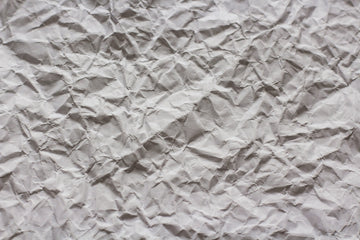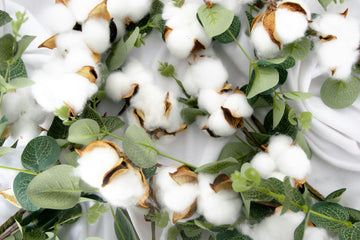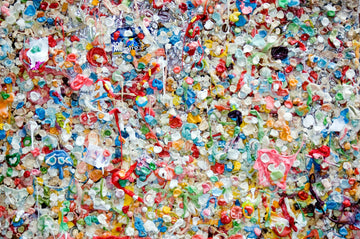When it comes to sustainability, finding materials that are both durable and eco-conscious can be a challenge. Enter Tyvek, a lightweight yet strong material that offers both practical applications and a relatively low environmental impact. While traditionally associated with industrial use, Tyvek is finding new relevance in sustainable products, packaging, and even corporate swag. But what exactly is Tyvek, and why should businesses and consumers consider it for eco-friendly solutions?
In this article, we’ll dive into the unique characteristics of Tyvek, explore its applications across various industries, and examine how it contributes to sustainability.
What is Tyvek?
Tyvek is a synthetic material made from high-density polyethylene (HDPE) fibers. Developed by DuPont in the 1960s, Tyvek is known for being strong, lightweight, and resistant to water, tearing, and punctures. It’s often compared to paper because of its appearance, but Tyvek has far superior durability. The material’s structure allows it to be flexible yet tough, making it suitable for a wide range of applications.
Despite being synthetic, Tyvek is 100% recyclable. This makes it an attractive option for companies looking to incorporate durable yet eco-friendly materials into their products and packaging.
Why Tyvek is Considered Eco-Friendly
While Tyvek is a synthetic material, several factors contribute to its eco-friendly credentials:
- Recyclable: One of Tyvek’s standout features is its recyclability. Tyvek can be reprocessed and used to create new products, helping to close the loop on waste and reduce the demand for virgin materials. Many companies that use Tyvek in their products or packaging offer recycling programs to ensure that the material is properly processed after use.
- Lightweight and Durable: Because Tyvek is so lightweight, it reduces the environmental impact associated with transportation and shipping. At the same time, its durability means that products made from Tyvek can last a long time, reducing the need for frequent replacements and cutting down on waste.
- Low Energy Production: Producing Tyvek requires relatively low amounts of energy compared to other synthetic materials. DuPont has taken steps to make the production process more sustainable by reducing emissions and ensuring that no hazardous chemicals are released during manufacturing.
- Water-Resistant and Breathable: Tyvek’s unique properties make it resistant to water while allowing vapor to pass through. This breathability reduces the need for additional chemical treatments that are often used to make other materials water-resistant, further minimizing its environmental impact.
Applications of Tyvek
Tyvek’s combination of strength, flexibility, and eco-friendliness makes it ideal for a wide variety of uses. Here are some of the most common applications where Tyvek is making an impact:
1. Eco-Friendly Packaging
One of the most popular uses for Tyvek is in packaging. Because it’s durable, lightweight, and resistant to tearing, Tyvek is often used in mailing envelopes, food packaging, and protective wraps for products. Its water-resistant properties also make it ideal for protecting delicate items during shipping.
Many companies are now turning to Tyvek as an alternative to traditional plastic-based packaging, especially since it can be recycled after use. By choosing Tyvek, businesses can reduce the environmental impact of their packaging without sacrificing performance.
2. Construction and Building Materials
Tyvek is widely used in the construction industry as a protective barrier in homes and buildings. Known as Tyvek HomeWrap, the material is applied to the exterior walls of homes to prevent water infiltration while allowing vapor to escape. This helps improve energy efficiency by reducing drafts and keeping insulation dry, which ultimately reduces heating and cooling costs.
Using Tyvek in construction also contributes to sustainability by extending the lifespan of buildings and improving energy efficiency, both of which reduce the environmental footprint of homes and commercial spaces.
3. Promotional Products and Swag
As businesses move toward sustainable practices, Tyvek is increasingly being used in promotional products and corporate swag. From reusable tote bags to lightweight luggage tags and wallets, Tyvek offers a unique alternative to traditional plastic or fabric materials. These products are not only durable and water-resistant but also fully recyclable, making them perfect for businesses that want to promote their brand while staying eco-conscious.
Tyvek also provides a sleek, modern aesthetic that can be easily customized with logos and designs, giving businesses a stylish way to showcase their commitment to sustainability.
4. Fashion and Accessories
In the fashion world, Tyvek is making its mark as an alternative to leather and other synthetic materials. Designers are using Tyvek to create jackets, bags, and even footwear that are lightweight, weather-resistant, and environmentally friendly. The material’s ability to mimic the look and feel of paper gives it a unique texture that stands out in both high-end and casual fashion.
Many fashion brands are embracing Tyvek because it allows them to combine style with sustainability. As consumers demand more eco-friendly options, Tyvek is becoming a popular choice for creating fashion items that have both aesthetic appeal and a lower environmental impact.
Why Tyvek is Important for Sustainability
Choosing Tyvek as a material for products and packaging aligns with the growing global emphasis on sustainability. Here are some key reasons why Tyvek is important for businesses and consumers looking to reduce their environmental footprint:
1. Durability Reduces Waste
Products made from Tyvek are known for their longevity, which means they don’t need to be replaced as frequently as products made from less durable materials. This reduces the amount of waste generated over time, helping to minimize the environmental impact.
2. Supports a Circular Economy
Because Tyvek is recyclable, it fits well into the concept of a circular economy, where materials are reused and recycled rather than discarded after a single use. By incorporating Tyvek into your products, you can contribute to a system that reduces waste and conserves resources.
3. Versatile and Multi-Use
Tyvek’s versatility means it can be used across various industries, from construction to fashion. Its adaptability allows businesses to replace less sustainable materials with Tyvek in many different applications, reducing overall environmental impact without compromising on quality or performance.
4. Promotes Sustainable Branding
For businesses, using Tyvek in promotional items and packaging is a powerful way to showcase a commitment to sustainability. Consumers are increasingly looking for brands that prioritize eco-friendly practices, and offering products made from recyclable and sustainable materials like Tyvek can enhance your brand’s reputation.
How Tyvek Can Be Used in Everyday Life
Incorporating Tyvek into daily life is an easy and effective way to reduce reliance on less sustainable materials. Here are a few ways Tyvek can be used to support a greener lifestyle:
- Reusable Shopping Bags: Replace single-use plastic bags with durable, water-resistant Tyvek tote bags for shopping or everyday use.
- Organizational Tools: Use Tyvek envelopes or folders for important documents, combining strength and eco-friendliness.
- Outdoor Gear: Tyvek is great for waterproof outdoor products, like picnic mats or protective gear for electronics, offering sustainability with performance.
Conclusion: Why Tyvek Matters for a Sustainable Future
As we seek out materials that combine durability, functionality, and sustainability, Tyvek stands out as an excellent choice. Whether used in packaging, construction, fashion, or promotional products, Tyvek offers a wide range of eco-friendly applications that align with the principles of a circular economy.
By embracing Tyvek, businesses can reduce waste, promote sustainable branding, and offer consumers products that last longer while having a lower environmental impact. For consumers, opting for Tyvek-based items is an easy and effective way to support sustainable practices in everyday life. As we move toward a more sustainable future, materials like Tyvek play a crucial role in minimizing our environmental footprint and promoting responsible consumption.




